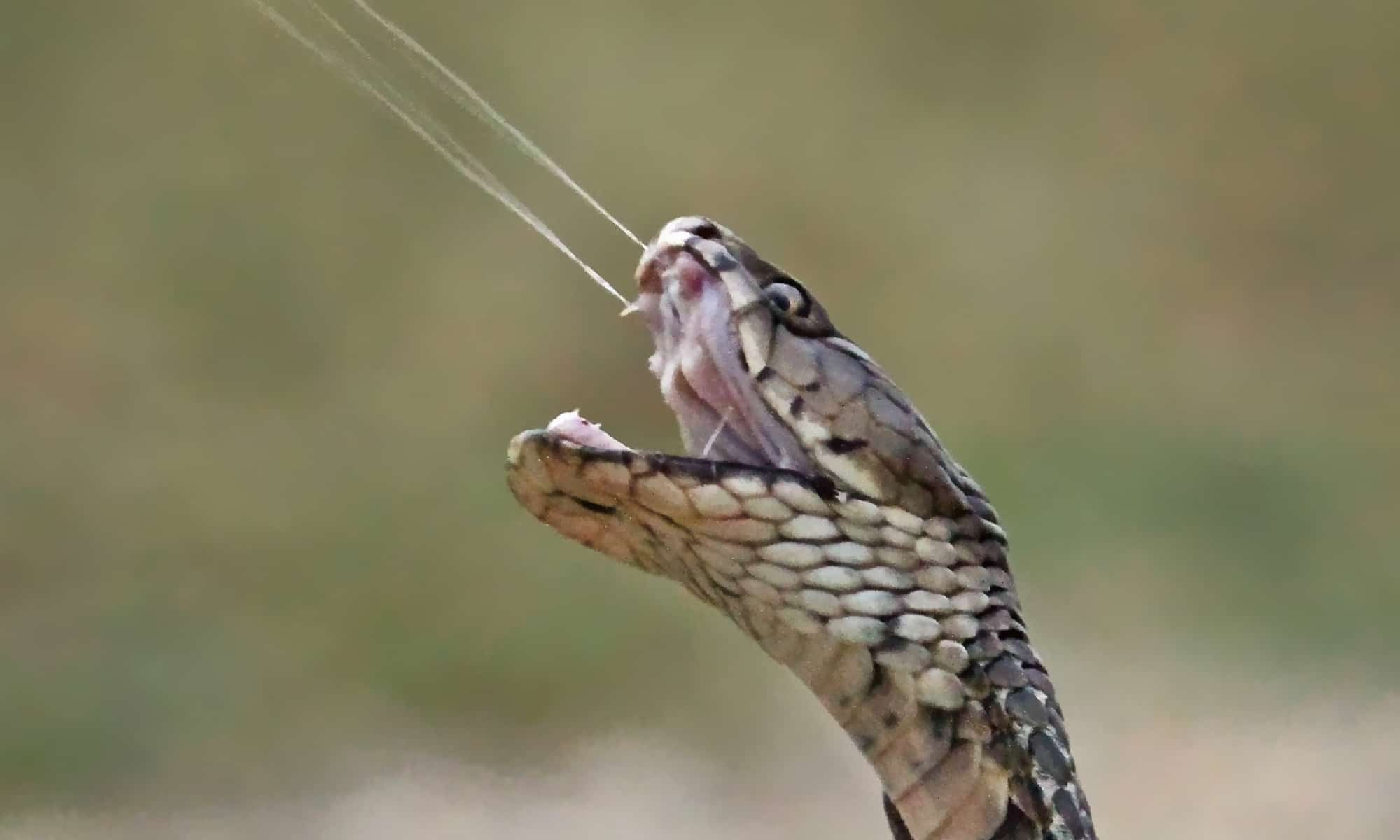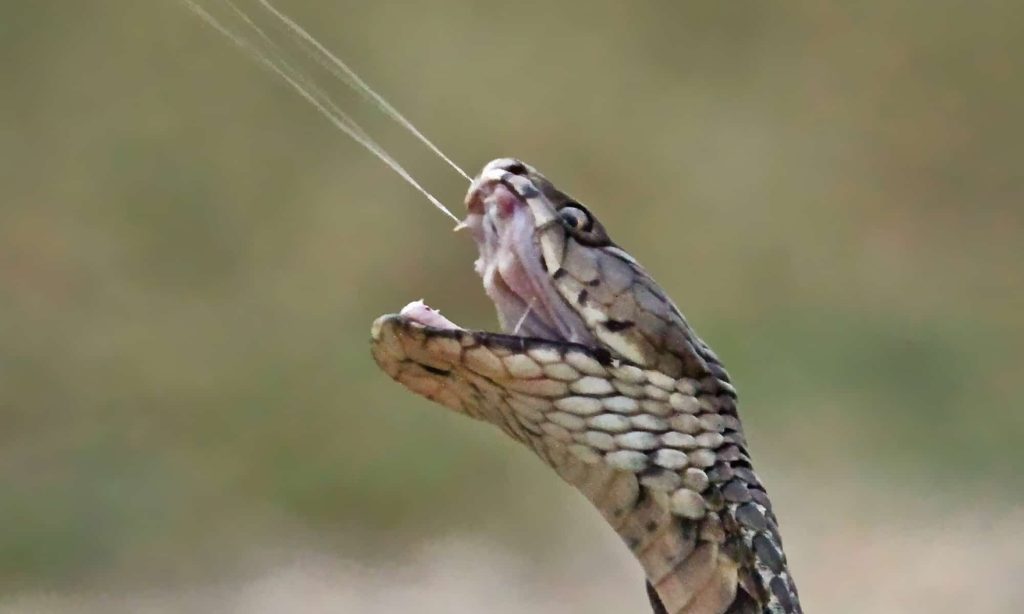Venomous vipers are some of the most fascinating and dangerous creatures on the planet. With their sharp fangs and potent venom, these snakes strike fear into the hearts of humans and animals alike. But what exactly makes a viper venomous, and what are the different types of venom and their effects? In this article, we will delve into the world of venomous vipers and uncover the secrets of their deadly poison. So, let’s get started and explore the fascinating world of venomous vipers together!
Venomous vipers are a type of poisonous snake that can cause serious harm to humans. There are many different types of venomous vipers, each with their own unique venom and effects. The venom of a viper can cause symptoms such as pain, swelling, and even death in some cases. It’s important to understand the types and effects of their venom to stay safe when encountering these snakes.

Venomous Vipers: Understanding the Types and Effects of Their Venom
Venomous vipers are a group of snakes that are known for their deadly venom. These snakes belong to the Viperidae family, which includes over 300 species. The venom of these snakes can cause serious harm to humans and animals alike. Understanding the different types of venom and their effects is crucial in avoiding potentially fatal encounters with these creatures.
Types of Venom
There are two main types of venom produced by venomous vipers: hemotoxic and neurotoxic. Hemotoxic venom affects the blood and tissues of the victim, while neurotoxic venom attacks the nervous system.
Hemotoxic venom contains enzymes that break down tissue and cells, causing extensive damage to the victim’s body. This type of venom can cause pain, swelling, and even death. Hemotoxic venom is commonly found in pit vipers such as rattlesnakes and copperheads.
Neurotoxic venom, on the other hand, affects the victim’s nervous system. This type of venom can cause paralysis, respiratory failure, and death. Neurotoxic venom is commonly found in vipers such as cobras and mambas.
Effects of Venom
The effects of venom can vary depending on the type of snake and the amount of venom injected. In general, venomous viper bites can cause pain, swelling, and bruising. More severe symptoms can include nausea, vomiting, dizziness, and difficulty breathing.
Hemotoxic venom can cause tissue damage, leading to necrosis and the breakdown of muscles and organs. This can result in permanent disabilities or even death. Neurotoxic venom can cause paralysis, leading to respiratory failure and death.
Benefits of Venom
While venomous viper bites can be deadly, venom also has some potential benefits. The toxins in venom have been studied for their potential medical applications, such as pain relief and treating heart disease.
Venom is also used in the production of antivenom, which is used to counteract the effects of venomous snake bites. Antivenom is made by injecting animals with small amounts of venom and collecting the antibodies produced in their blood.
Venomous Vipers vs. Nonvenomous Snakes
It is important to be able to identify venomous vipers from nonvenomous snakes to avoid potentially dangerous encounters. Venomous vipers have triangular-shaped heads and vertical pupils, while nonvenomous snakes have round pupils and a more rounded head.
Venomous vipers also have heat-sensing pits located between their eyes and nostrils. These pits help them detect prey and predators in the dark. Nonvenomous snakes do not have heat-sensing pits.
Preventing Venomous Viper Bites
The best way to prevent venomous viper bites is to avoid contact with these snakes. Be aware of your surroundings when hiking or camping in areas where venomous vipers are known to live. Wear protective clothing and shoes, and avoid walking in tall grass or rocky areas where snakes may be hiding.
If you do encounter a venomous viper, do not attempt to handle or provoke it. Back away slowly and give the snake space to retreat. If you are bitten, seek medical attention immediately.
Treatment for Venomous Viper Bites
Treatment for venomous viper bites depends on the type and amount of venom injected. In general, the affected limb should be immobilized and kept at or below heart level to slow the spread of venom through the bloodstream.
Antivenom may be administered to counteract the effects of the venom. Pain medication and fluids may also be given to manage symptoms and prevent dehydration.
Conclusion
Venomous vipers are a group of snakes that are known for their deadly venom. Understanding the different types of venom and their effects is crucial in avoiding potentially fatal encounters with these creatures. By learning to identify venomous vipers, taking preventative measures, and seeking prompt medical attention in the event of a bite, we can reduce the risk of harm and coexist safely with these fascinating animals.
Frequently Asked Questions
What are venomous vipers?
Venomous vipers are a group of snakes that produce venom to immobilize their prey or defend themselves from predators. They have specialized fangs that can inject venom into their target, which can cause a range of effects from mild pain to death in humans. Vipers are found all over the world, and there are many different types of venomous vipers with unique venom compositions and effects.
Vipers are known for their triangular-shaped heads and slit-like pupils, which distinguish them from non-venomous snakes. Their venom is a complex mixture of enzymes, peptides, and other molecules that can cause tissue damage, paralysis, and other symptoms depending on the species and amount of venom injected.
What are the different types of venomous vipers?
There are many different types of venomous vipers, including the rattlesnake, copperhead, cottonmouth, and many others. Each species has a unique venom composition and effect, ranging from mild to severe symptoms. For example, some vipers produce venom that primarily causes pain and swelling, while others produce venom that can cause paralysis or even death.
It’s important to understand the different types of venomous vipers in order to properly identify and treat a bite. If you are in an area with venomous snakes, it’s important to educate yourself about the local species and take precautions to avoid encounters.
What are the effects of venomous viper bites?
The effects of venomous viper bites can vary widely depending on the species of snake and amount of venom injected. Some bites may only cause mild symptoms such as pain and swelling, while others can be life-threatening. Common symptoms of venomous viper bites include pain, swelling, redness, and bruising at the site of the bite. Other symptoms may include nausea, vomiting, diarrhea, dizziness, and difficulty breathing.
If you are bitten by a venomous viper, it’s important to seek medical attention immediately. Treatment may include antivenom, pain management, and other supportive measures.
How can you prevent venomous viper bites?
Preventing venomous viper bites involves taking precautions to avoid encounters with these snakes. Some tips for preventing bites include wearing long pants and boots when hiking or working outdoors, using a flashlight at night to avoid stepping on snakes, and avoiding areas where snakes are known to live, such as rocky outcroppings and brushy areas.
It’s also important to be aware of the local species of venomous vipers and their habits. If you are in an area with venomous snakes, educate yourself about the local species and take precautions to avoid encounters.
What is antivenom and how does it work?
Antivenom is a medication used to treat venomous viper bites. It is made from the antibodies of animals that have been immunized against the venom of a specific species of snake. When administered to a bite victim, the antivenom works by binding to the venom molecules in the bloodstream and neutralizing their toxic effects.
Antivenom is typically given intravenously and may be accompanied by other treatments such as pain management and supportive care. It’s important to seek medical attention immediately if you are bitten by a venomous viper, as early administration of antivenom can help prevent serious complications.
In conclusion, understanding venomous vipers and their venom is crucial for our safety and the environment. The different types of venomous vipers have varying effects on humans and other animals, and it is essential to know how to identify and avoid them. However, it is also important to appreciate the role that venomous vipers play in their ecosystems and to take measures to protect their habitats.
By learning about venomous vipers and their venom, we can reduce the risk of bites, educate others, and promote conservation efforts to protect these fascinating creatures. While venomous vipers may seem dangerous, they are also a vital part of our natural world, and it is up to us to ensure that they continue to thrive in their habitats. So, let us all do our part to appreciate, respect, and protect the venomous vipers that share our world.


